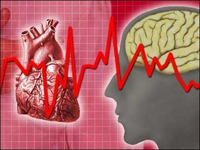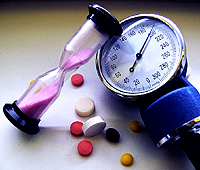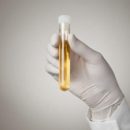Symptoms of angina. Differences of the angina angina, rest, unstable and first aid in the attack of ischemia.
Content
- Symptoms of the attack of angina stress
- Stenrope Unstable: Symptoms of Disease
- First aid for symptoms of angina
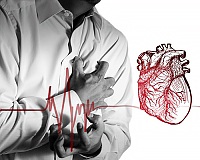 Angina — This is one of the forms of coronary heart disease (IBS). Its outdated title — «angina pectoris». Factors predisposing to the development of this disease. However, the true reason for his one — The narrowing of the enlightenment of the arteries that feed the heart muscle. Symptoms of angina are often confused with the manifestations of others, much less dangerous diseases. However, if there is a patient core in the house, you must know the signs of the IBS.
Angina — This is one of the forms of coronary heart disease (IBS). Its outdated title — «angina pectoris». Factors predisposing to the development of this disease. However, the true reason for his one — The narrowing of the enlightenment of the arteries that feed the heart muscle. Symptoms of angina are often confused with the manifestations of others, much less dangerous diseases. However, if there is a patient core in the house, you must know the signs of the IBS.
Symptoms of the attack of angina stress
The attack of the stroke angularity begins after exercise or emotional experiences. Suddenly a person begins to feel pain in the sternum. Disciplous feeling Patients often describe as spasm, burning, pressure, heaviness, skewing, sense of air shortness. Usually, the symptom only begins in the field of sternum, and later (but not always) extends to other areas of the body. Left blade, inter-opacpid region, left hand, neck — Here are typical irradiation zones with stenocardia.
An important diagnostic sign is gestures with which a person describes his feelings. For IBS is characterized by symptom «Compressed fist». Patient, showing a place where he hurts, unconsciously compresses his fist. If it indicates one or two fingers — Diagnosis of angina, unlikelyant.
The duration of pain in a typical attack of angina, as a rule, does not exceed 20 minutes. They are characterized by the fact that in the occurrence of discomfort, the patient is forced to freeze in complete immobile. Only after complete cessation of unpleasant sensations, he starts moving.
The first help at the same time is considered to receive nitroglycerin. Typically, such treatment is enough to stop the attack. Pains are completely pitted for 3-5 minutes.
Stenrope Unstable: Symptoms of Disease
Stenrope of voltage or rest — This is a description of the degree of illness. From these names it is clear that the patient has an attack occurs when loads or in full. Both of these options relate to stable type. With these types of illness, the patient's condition is relatively stable, there is no sharp deterioration and, with adequate treatment of life, nothing threatens.
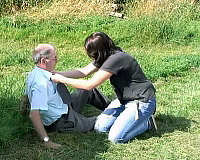
Term «Unstable angina» was introduced in parallel with another concept «Acute coronary syndrome», or OX. This was done in order to distinguish between angina, not threatening life, and the form of IHS, potentially dangerous to health.
Myocardial infarction also includes OKS. Diagnosis «Unstable angina» Putting to people who have suffered a long pain attack (over 20 minutes), not bordered by the three-time taking nitroglycerin. Previously, doctors wrote «Pre-infarction state» and directed a person to the hospital. Now they are diagnosed «Acute coronary syndrome», But hospitalization is also obligatory.
OKS can end two — either a true myocardial infarction, in which part of the muscle tissue of the heart die or unstable angina, at which the death of the heart muscle does not occur.
The only difference between stable and unstable forms — This duration of pain and risk level of serious complications.
First aid for symptoms of angina
As previously written, the first aid in the symptoms of angina is in the reception of nitroglycerin under the tongue. It can be pills, capsules, sprays — No matter what, most importantly — take medicine in the first minutes of attack. You can repeat the reception in 3-5 minutes. If the three-time consumption of the drug has not reduced the level of pain — Immediately call ambulance. The situation can be threatening from minute to minute. Timely recognizing the symptoms of angina, you can easily save your loved ones.



